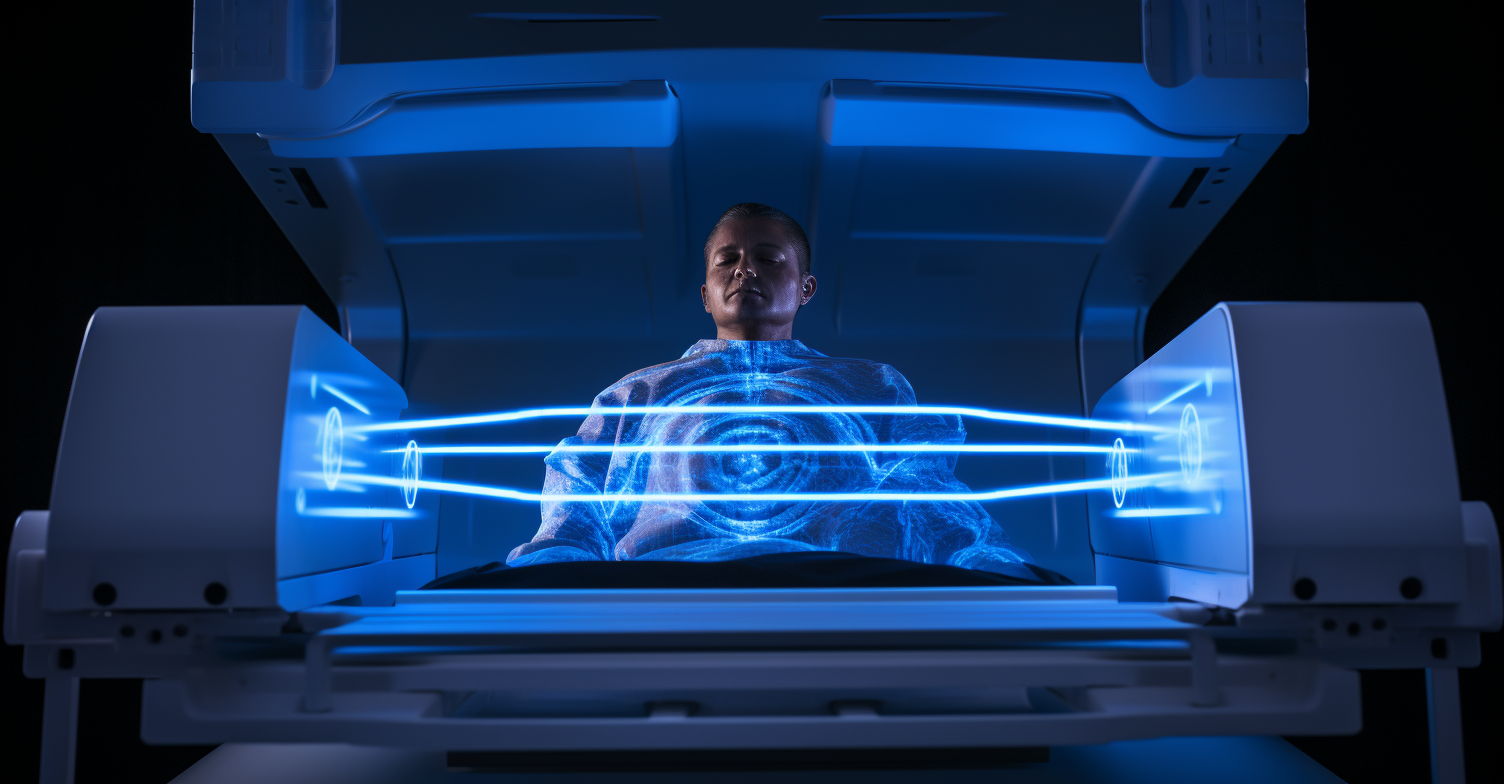In today’s health-conscious world, understanding the intricacies of our body is paramount. Body composition analysis is a pivotal tool that goes beyond the conventional scales, offering insights into the fat, muscle, and bone percentages of our bodies. According to a study by the National Institute of Health, over 60% of adults who embark on fitness journeys are now opting for body composition tests to get a holistic view of their health.
What is Body Composition Analysis?
When you step onto a scale, the number you see might not tell the whole story. Enter Body composition analysis. This isn’t just a fancy term for the health-conscious; it’s a deep dive into what makes up those pounds.
Body composition analysis breaks down the body into its core components. We’re talking about:
- Fat (not just the kind you see in a juicy burger),
- Muscle (more than just those biceps you flex in the mirror),
- Bone (your body’s natural scaffolding), and
- Water (yes, all that H2O you’re told to drink daily).
But here’s the kicker: two individuals can weigh the same but have entirely different body compositions. So, while weight is a number, body composition is the narrative behind that number. It’s like comparing apples to oranges, or in this case, muscle to fat.
Did you know? A study from Netmeds revealed that 70% of fitness enthusiasts now prioritize body composition over body weight.
Why is Body Composition Important?
Alright, so we’ve established that body composition is more than just a buzzword. But why should you care?
First off, body composition is like a health report card. It plays a pivotal role in flagging potential health risks. For instance, a high percentage of body fat can be a red flag for diseases like diabetes or heart conditions.
Understanding your body fat percentage is not about vanity; it’s about vitality. It’s not just about how you look in the mirror, but how your internal systems function. A balanced body composition ensures that you’re not just living, but thriving.
Moreover, there’s a direct link between body composition and metabolism. Think of metabolism as your body’s engine. A body with a higher muscle mass (thanks to regular workouts and protein-packed meals) will burn calories faster, even at rest. It’s like having a sports car engine in a compact car body.
And let’s not forget overall fitness. A balanced body composition is the cornerstone of physical fitness. It ensures agility, strength, and endurance. Whether you’re running a marathon, lifting weights, or chasing after your toddler, a balanced body composition ensures you’re up for the task.
Fun Fact: According to a study on JacAnswers, milk can play a significant role in improving body composition, especially when combined with resistance training.
Traditional and Common Methods
Diving into the world of Body composition analysis, we find a plethora of methods that have been tried and tested over the years. Some are as old as your grandma’s cookie recipe, while others are as modern as the latest iPhone. Let’s embark on this enlightening journey!
Skinfold Tests
Ah, the good old pinch test! Remember when your gym trainer would come at you with a caliper, and you’d wonder if it was some sort of medieval torture device? That’s the skinfold test for you.
- How it works: By measuring the thickness of skinfolds at various body sites, one can estimate the overall body fat percentage. It’s like reading the story of your body’s fat through those pinches.
- Accuracy: While it’s a quick and affordable method, its accuracy can vary based on the skill of the person administering the test. So, choose your pinch-master wisely!
- Limitations: Factors like age, gender, and the specific sites measured can influence results. Plus, it might not be the best method for those with a higher body fat percentage. No one likes extra pinching, right?

Bioelectrical Impedance Analysis (BIA)
Sounds fancy, doesn’t it? But it’s simpler than you think.
- Principle: This method measures how quickly electrical currents travel through the body. Fat is a poor conductor (it was never good in school), slows down the current, while muscle, which contains more water, speeds it up.
- Accuracy: It’s all about hydration. The more hydrated you are, the better the muscle conducts electricity.
- Factors affecting accuracy: Dehydration can skew results. So, if you’ve been partying hard the night before or just ran a marathon, maybe reschedule your test. Also, food intake and recent physical activity can play spoilsport.
Did you know? According to The CCMC, BIA is becoming a popular choice in many health clinics due to its non-invasive nature.

Advanced Methods for Accurate Analysis
For those who love precision and aren’t afraid to dive deep (literally), these advanced methods are your ticket to body composition nirvana.
Hydrostatic (Underwater) Weighing
Ever thought of taking a dip to know your body fat? Here’s your chance.
- Science: It’s all about Archimedes’ principle. Your underwater weight compared to your land weight gives insights into your body’s density. And from there, it’s a hop, skip, and jump to body fat percentage.
- Benefits: Often dubbed the “gold standard” of body composition analysis, it’s highly accurate.
- Accuracy: While it’s on point, the method requires you to be fully submerged in water, which might not be everyone’s cup of tea.
Air Displacement BodPod
If going underwater isn’t your thing, how about some air displacement?
- Comparison: Think of it as the air version of hydrostatic weighing. Instead of water, it uses air to measure body volume.
- Advantages: It’s quick, taking only about 5 minutes. Plus, no need to get wet!
- Limitations: While it’s accurate, factors like facial hair and moisture can affect results. So, maybe shave that beard and stay dry?
Cutting-Edge Techniques in Body Composition Analysis
In the ever-evolving world of health and fitness, staying updated with the latest techniques is crucial. Enter the world of advanced body composition analysis, where precision meets innovation.
DXA/DEXA Scan
The DXA/DEXA Scan is like the Rolls Royce of Body composition analysis. It’s not just about measuring fat; it’s about understanding where that fat is located.
- Detailed assessment capabilities: This scan offers a comprehensive view of your body, segmenting it into regions for precise analysis.
- Differentiating between subcutaneous and visceral fat: While subcutaneous fat is the one you can pinch, visceral fat surrounds your organs. And guess what? The DXA/DEXA Scan can tell them apart!
- Bone density insights: Apart from fat and muscle, this scan also throws light on your bone health. It’s like getting a 3-in-1 deal!
Did you know? According to InBody, DXA/DEXA Scans are increasingly being used in top-tier health facilities for their unparalleled accuracy.

Blockchain and Cryptocurrency in Health Data Management
In an age where data breaches are as common as morning coffee spills, how do we ensure our health data remains uncompromised? Enter blockchain and cryptocurrency.
| Macronutrient | Role in Body Composition |
|---|---|
| Proteins | Essential for building and repairing muscle tissue. |
| Fats | Support cell growth and provide a source of long-term energy. |
| Carbohydrates | Supply quick energy for workouts and overall bodily functions. |
- The role of blockchain in securing health data: Think of blockchain as an unbreakable chain of data blocks. Each block contains health data that, once entered, cannot be altered without altering all subsequent blocks. It’s like a diary that auto-corrects any unauthorized changes.
- Advantages of using cryptocurrency in health-related transactions: Cryptocurrency, with its decentralized nature, ensures that health transactions are secure, transparent, and fast. No more waiting for insurance claims or worrying about data theft!
Strategies to Improve Body Composition
So, you’ve got your body composition results. Now what? It’s time to roll up those sleeves and get to work!
| Strategy | Description |
|---|---|
| Tracking Calorie Intake | Monitor daily calorie consumption to ensure proper fueling without overloading. |
| Role of Macronutrients | Understand the importance of proteins, fats, and carbs in shaping the body. |
| Strength or Resistance Training | Engage in strength training to build muscle and boost metabolism. |
| Consistency and Patience | Achieve desired body composition through consistent effort and patience. |
- Importance of tracking calorie intake: It’s not just about eating less; it’s about eating right. Tracking calories ensures you’re fueling your body without overloading it.
- Role of macronutrients in body composition: Proteins, fats, and carbs aren’t just fancy terms. They play a pivotal role in shaping your body. While proteins help build muscle, carbs provide energy, and fats support cell growth.
- The significance of strength or resistance training: Want to boost that muscle percentage? Strength training is your best friend. It not only builds muscle but also revs up your metabolism.
- Consistency and patience in achieving desired body composition: Rome wasn’t built in a day, and neither is your dream body. Stay consistent, be patient, and watch the magic unfold.
FAQ
What is Body composition analysis?
Body composition analysis is the process of distinguishing the various components of the body, including fat, muscle, bone, and water, to provide a detailed understanding of one’s health.
Why is Body composition analysis important?
Understanding body composition analysis is crucial as it offers a deeper insight into one’s health, beyond just body weight. It helps in identifying potential health risks and tailoring fitness strategies.
How does Body composition analysis differ from BMI?
While BMI calculates a ratio of height to weight, body composition analysis provides a detailed breakdown of fat, muscle, bone, and water percentages in the body.
Are there different methods for Body composition analysis?
Yes, there are various methods, including Skinfold Tests, Bioelectrical Impedance Analysis, Hydrostatic Weighing, Air Displacement BodPod, and DXA/DEXA Scan.
How often should one undergo a Body composition analysis?
It’s recommended to undergo body composition analysis every 3-6 months, especially if one is actively working on fitness goals.
Is Body composition analysis safe?
Absolutely. Most methods of body composition analysis are non-invasive and pose minimal to no risks.
Can Body composition analysis help in weight loss?
Yes, understanding your body composition can guide tailored fitness and nutrition strategies, aiding in effective weight loss and muscle gain.
Conclusion
In wrapping up, Body composition analysis is undeniably a game-changer in the realm of health and fitness. It offers a comprehensive view of one’s body, allowing for tailored strategies to achieve wellness goals. As we’ve explored the various methods and the significance of this analysis, it’s evident that this tool is indispensable for anyone serious about their health.

